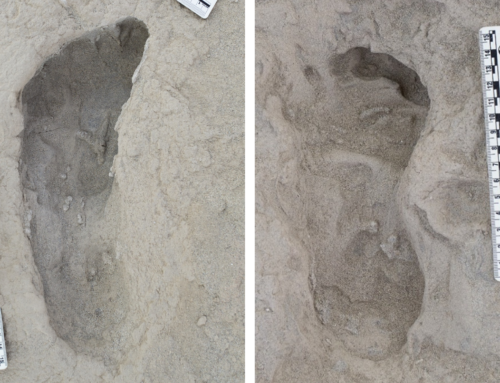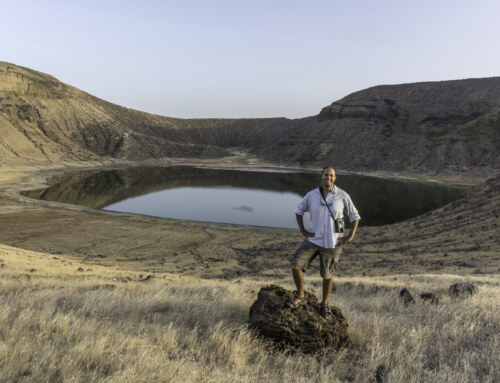As most people are enjoying the beach and sunshine in the US, some Stony Brook students took a long shot and came to the shores of Lake Turkana, Kenya. They are here for the brand-new Global Innovation Field School!
The Global Innovation summer program is organized by the College of Engineering & Applied Sciences, Stony Brook University, and hosted by the Ileret facility of the Turkana Basin Institute. One of the major goals of this program is to understand the basic principles of providing an environment adequate for human settlement. Being literally in the middle of nowhere, Field School students will be exposed to the obstacles encountered during the engineering process of developing means for infrastructure, water availability, and other essential components for sustainable human inhabiting. This is the first time the program is run, and all the Field School participants are excited about this new experience!
The Field School team arrived in Nairobi, Kenya, on May 23 and stayed at the Wildebeest Eco-camp in the outskirts of Nairobi for one night. Wildebeest Eco-camp is a lovely place to stay and has been the host of several previous Field Schools. Students enjoyed living in large and furnished safari tents, a beautiful garden with a pool, and the cozy environment with a camp dog and a camp cat!

The Wildebeest Eco-camp in the morning
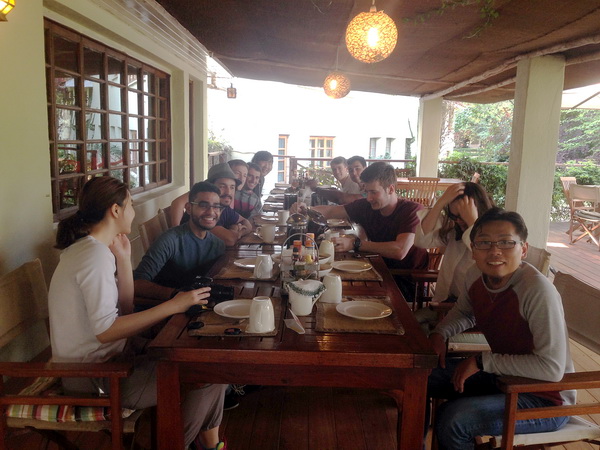
Afternoon tea at Wildebeest Eco-camp

Students exploring the guest lounge at Wildebeest Eco-camp, PC: Cheng-Wen Hsu
The next day, students went on a road trip to Mpala Research Center in Laikipia, just north of Mount Kenya.

Happy road trip! PC: Cheng-Wen Hsu
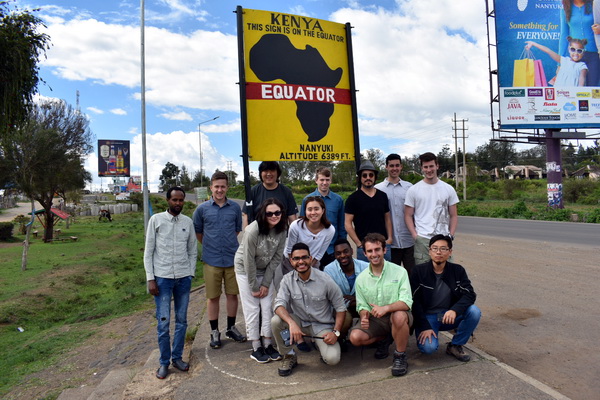
Students stopped at the Equator sign near Nanyuki, PC: Cheng-Wen Hsu
Mpala Research Center and Wildlife Foundation is known for its long-term wildlife conservation programs and ecological studies. Apart from being a hosting institution to many researchers, Mpala also supports local community development and resource management. One of the greatest challenges of the semi-arid lands in Kenya is shortage of water. A lot of the water that Mpala wildlife and people rely on comes from seasonal rains and river water in the local area. To learn how this precious resource is managed, students had a chance to visit some of the infrastructures for water resource in Mpala. A common way of water storage is by using weirs, which are typically built on rocky river beds. The weirs in Mpala are constructed using locally available materials such as rocks and sand, so the costs are kept reasonably low. Students will encounter similar challenges in Ileret, where they will stay for the next four weeks.
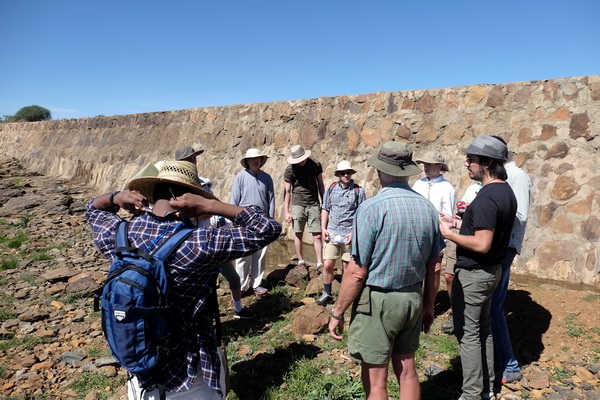
FS students examine a weir in Mpala
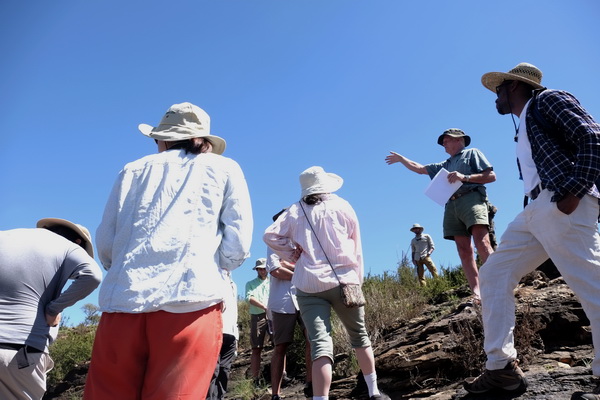
Alex, the director of management, shows students where a new weir will be built
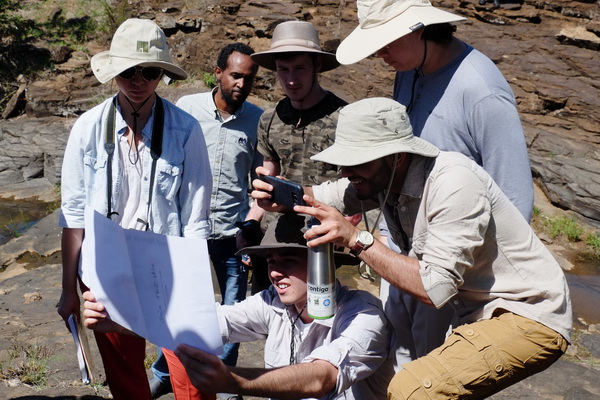
Students appreciate the blueprint of the new weir
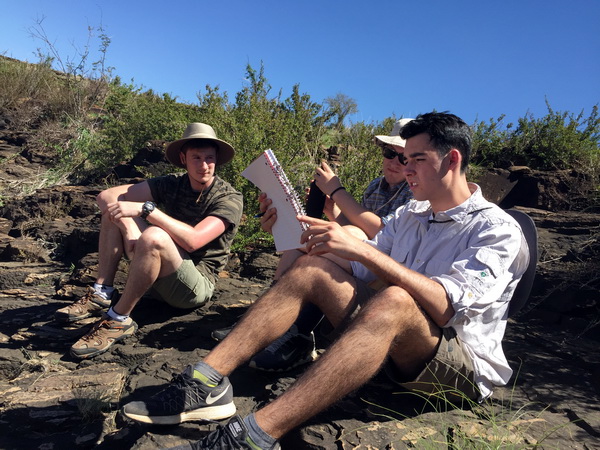
Nick, Ad and Brent discuss the location of the proposed weir, PC: Saffron Livaccari
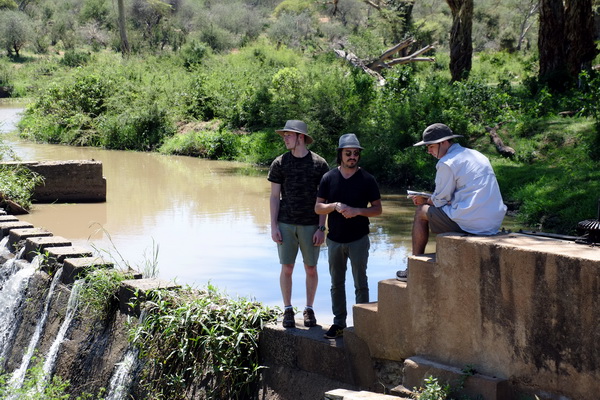
Course instructor Professor Rodrigo Peña-Lang (middle) inspects a weir across the Ewaso Narok river, PC: Cheng-Wen Hsu
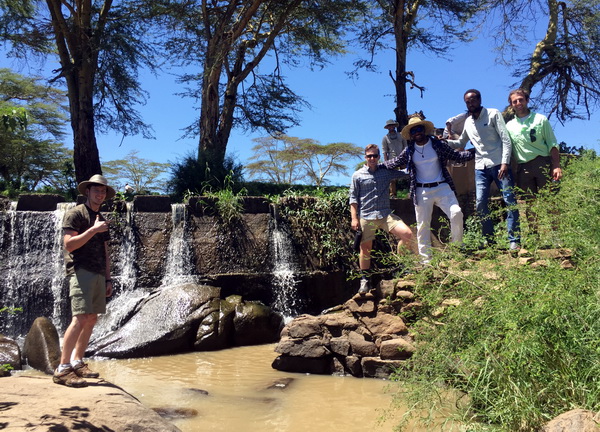
It’s looking pretty good! PC: Saffron Livaccari
The richness of wildlife in Mpala is certainly one of its greatest assets. And the students had a great opportunity to experience a lot of that! Take a look at some of the photos students took during the game drives.
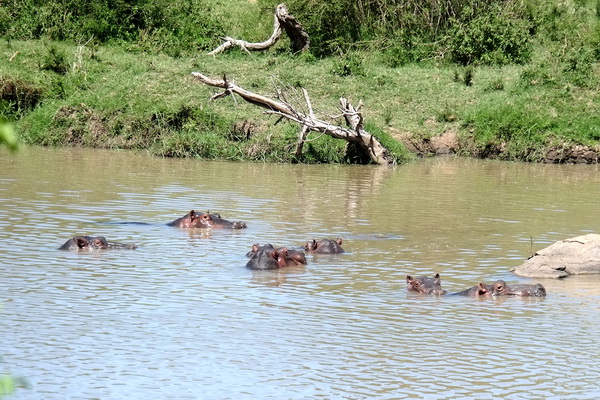
Hippos in the Ewaso Narok river
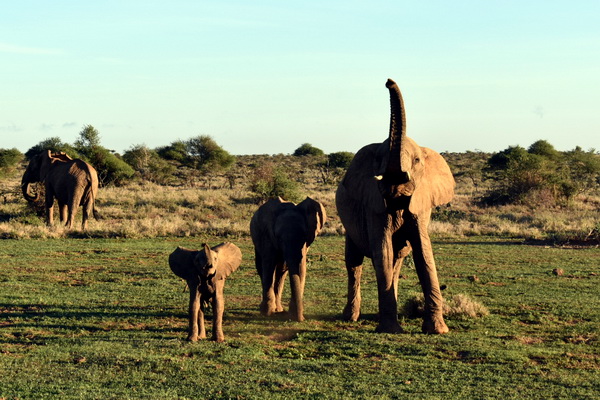
A family of elephants, PC: Cheng-Wen Hsu

A lone male giraffe in the bush, PC: Cheng-Wen Hsu
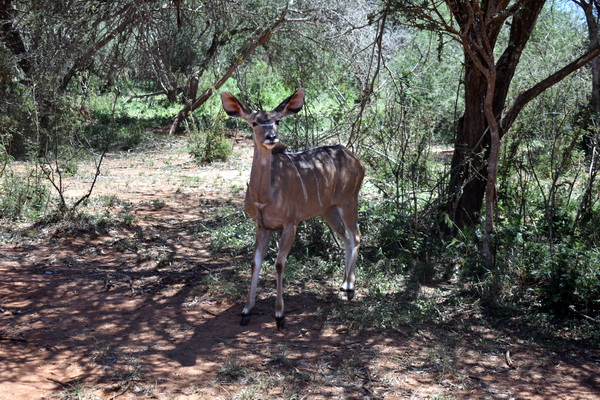
A female Greater Kudu, PC: Cheng-Wen Hsu
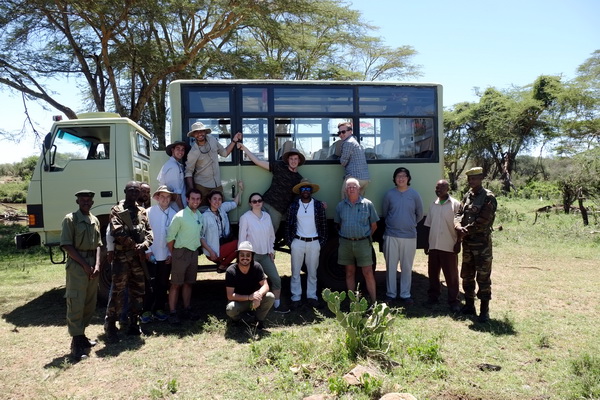
A group photo with our security guards and safari truck
The stay in Mpala was short but fruitful. Students had a chance to see the challenges facing both the wildlife and local communities. Next stop, we are heading to Ileret, an even drier and hotter part of the Kenyan drylands. Stay tuned!
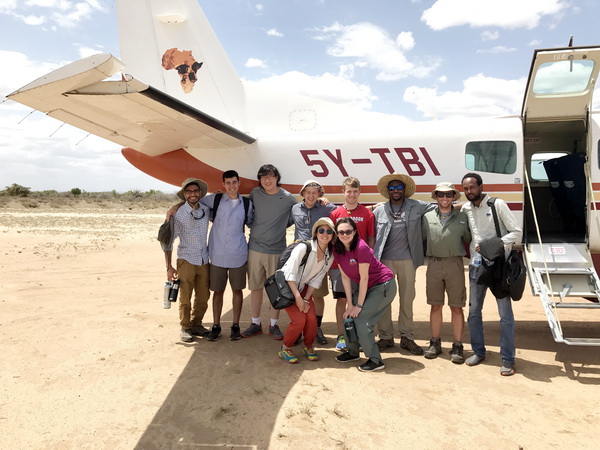
Students arrived at Ileret with Air Turkana


